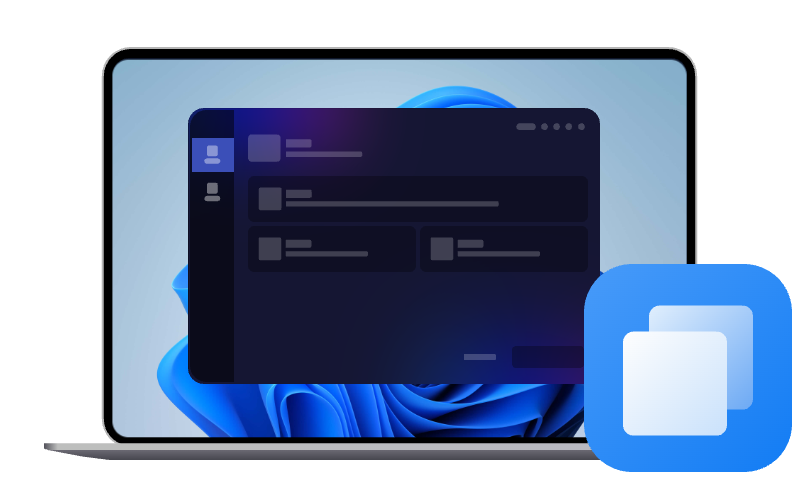How to Use GParted to Clone Partition: Full Guide
Wondering how to use GParted to clone partition on Windows? Follow this post to get a step-by-step guide. If you want a simpler solution, a GParted alternative for Windows is also available here.
Overview of GParted Clone
GParted, short for GNOME Partition Editor, is a free partitioning tool designed to create, resize, copy, and move disk partitions. It's often used through a live USB or CD, which allows you to work with partitions outside of the running operating systems, including Linux, Windows, and macOS.
When you use GParted to clone partition, what essentially happens is a low-level copy of one partition to another. This method preserves the entire file system, installed applications, system boot records (when applicable), and personal files and folders. This makes it an excellent solution for migrating data to a new disk, upgrading from HDD to SSD, or simply creating a reliable backup of an existing partition.
The tool supports both GParted disk clone (copying entire disks) and partition clone (copying individual partitions). However, because GParted isn't a dedicated cloning tool, there are limitations. For example, it copies partitions on a file-system level rather than a block-by-block duplication. And not all partition structures can be cloned flawlessly, and some file systems or smaller drives may present compatibility issues.
How to Use GParted to Clone Partition
Using GParted to copy partition to another disk involves creating a bootable environment, selecting the source partition, and copying it to the target drive. This ensures the data is transferred in its entirety. You can follow the steps below carefully to use GParted clone partition to another disk.
- Things You'll Need Before You Start:✎...
- A GParted Live USB or CD - Download and install GParted Live from the official website and create a bootable USB or CD.
- Backup of important files - Although cloning typically preserves data, it's always wise to back up beforehand.
- Enough unallocated space on the target disk or partition - The destination must have equal or larger capacity than the source.
- Basic understanding of partitions - You should know which partitions contain your data or operating system to avoid accidental overwrites.
Step 1. Connect your GParted Live USB (or insert the CD) into the computer. Reboot your system and access the boot menu to select the GParted Live device as the boot option. Then, it will be set to GParted Live by default.
Step 2. For the Policy for handling keymaps option, keep selecting the default option Don't touch keymap, and then continue with the default language, mode, and other settings.
Step 3. Once loaded, the GParted interface will appear. Locate the partition you want to clone, right-click it, and choose Copy.
Step 4. Then, go on to select the destination disk or unallocated space on the target drive. Right-click it and select Paste.
Step 5. After clicking the Paste button, a window will pop up prompting you to specify the unallocated space to use. If storage space is insufficient, you can drag the top arrow to adjust the disk space size or define the size of the partition as needed.
Step 6. Finally, confirm the action and click Apply to let GParted clone Windows disk or partition now.
Troubleshoot: Why GParted Can't Copy Partition?
Although GParted cloning partitions is feasible, it can sometimes fail or behave abnormally. Here are some of the common reasons why GParted might fail to copy a partition.
1️⃣ File System Incompatibility: GParted can't copy partitions that use unsupported or unrecognized file systems. For example, if you're trying to clone BitLocker encrypted drive or partition, GParted won't handle it properly.
2️⃣ Destination Drive Too Small: If your target partition is smaller than the source partition, GParted will not allow you to paste the data. The tool doesn't automatically resize partitions during cloning, so the destination must be equal to or larger in size.
3️⃣ Boot Partition Issues: When cloning system or boot partitions, especially for Windows, GParted doesn't automatically transfer the bootloader or system metadata. As a result, the cloned drive might not boot correctly after the process.
4️⃣ Corrupted Source Disk: If the source disk contains bad sectors or file system errors, the GParted clone disk/partition process may fail.
5️⃣ Partition Alignment Problems: When cloning to SSDs, improper alignment can cause slower performance or excessive wear.
Best GParted Alternative for Partition/Disk Clone - Simple & Quick
For those who prefer a more intuitive and streamlined process, using a specialized cloning tool is often a better choice than relying solely on GParted for cloning partition. One of the most recommended solutions is AOMEI Cloner, a professional disk cloning tool that simplifies every step. It offers an intuitive interface, advanced cloning options, and full compatibility with Windows systems, eliminating the need to boot from an external device.

- Partition Clone: You can directly clone a single partition without affecting the rest of the disk.
- System Clone: It can transfer your OS and keep it bootable without reinstalling Windows.
- Disk Clone: It allows copying the entire disk, including hidden partitions.
- Intelligent Clone: It clones only used sectors by default, allowing cloning to a smaller drive or cloning hard drive with bad sectors.
- SSD Alignment and Partition Resizing: When cloning to an SSD, it can automatically perform 4K alignment to boost performance and lifespan. And it allows to auto add unused space to all partitions or manually adjust partition size.
The following is how to clone partition using AOMEI Cloner:
Step 1. Install and run the best GParted alternative for Windows on your PC. Click on Clone in the left panel, then choose Partition Clone.
Step 2. Select the source partition that you want to clone, and then click Next. Select the destination partition, and then click Next.
Step 3. On the Operation Summary screen, confirm all the operations and click Start Clone. Don't forget to tick SSD Alignment if your target disk is an SSD.
FAQs on GParted Clone Partition
#1. Can GParted clone to a smaller drive?
GParted generally requires the destination partition to be equal to or larger than the source. Cloning to a smaller partition may fail if the file system can’t fit into the smaller space. To make this work, the source partition must be shrunk beforehand to match the target capacity.
An alternative like AOMEI Cloner makes this process easier by supporting intelligent sector cloning, which allows cloning to smaller drives without manual resizing.
#2. Can I clone a disk with GParted?
Yes, but with limitations. You can GParted clone disk by copying each partition one by one to the new drive. However, this manual approach can be time-consuming and may lead to boot issues if you're cloning boot drive to another drive.
#3. What is the best alternative to GParted for Windows?
The best alternative to GParted for Windows users is AOMEI Cloner. It supports full disk, partition, and system cloning directly within the Windows environment. It’s simple, safe, and doesn’t require Linux knowledge or complex manual setup.
Concluding Words
That’s all about how to use GParted to clone partition. While GParted is free, open-source, and versatile, its complexity and limitations, especially when dealing with smaller drives, boot partitions, or SSD alignment, can make it challenging for beginners.
AOMEI Cloner stands out as the ideal GParted alternative. It simplifies partition cloning into a few clicks, ensures SSD optimization, and works directly within Windows. Also, it allows one-click OS migration to new drive without booting errors.

